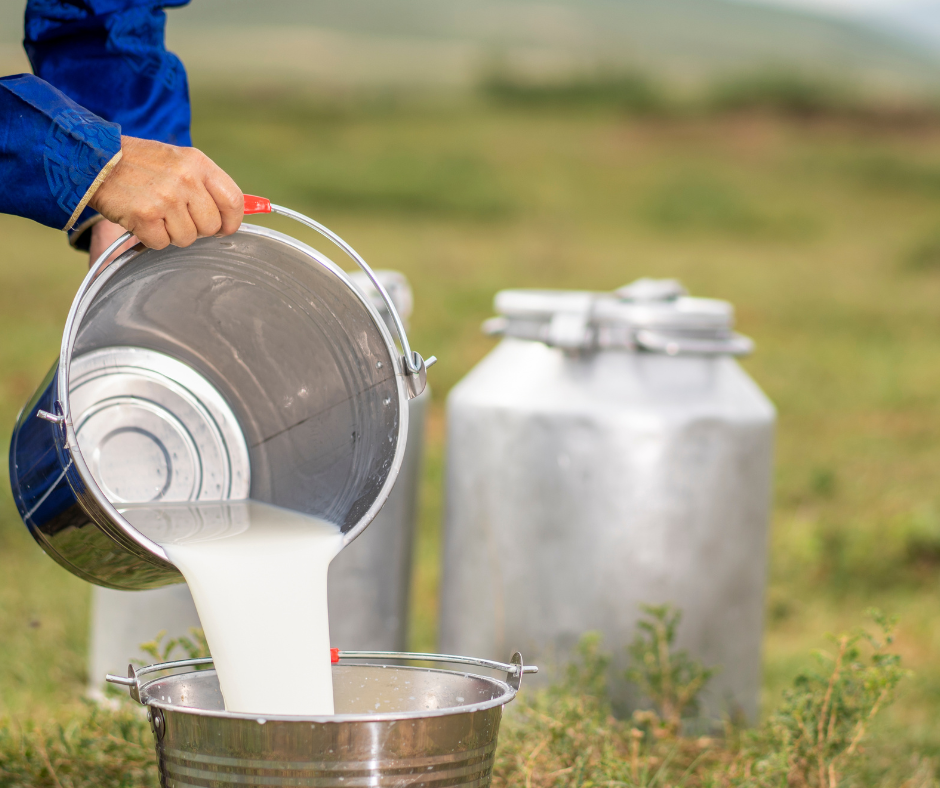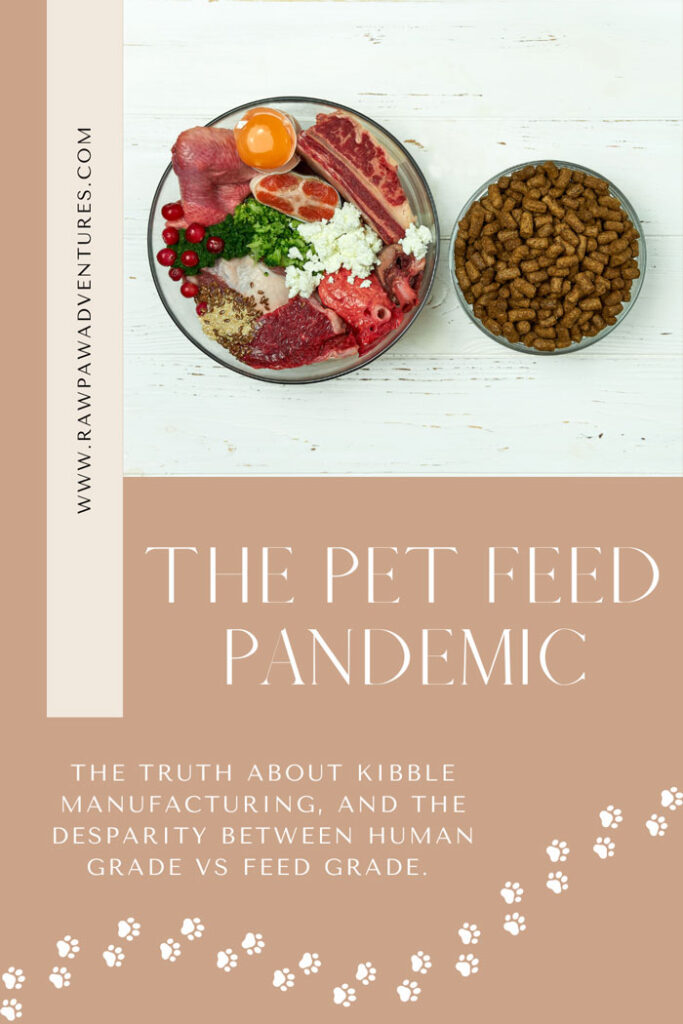
Once upon a time, before the age of ultra-processed foods and synthetic supplements, nature provided everything we needed for vibrant health- one of the most powerful, time-tested sources of nutrition- raw milk! That’s right—this ancient, unprocessed food has been nourishing mammals (including humans and their pets) for thousands of years, providing a powerhouse of essential nutrients and health-boosting properties.
So why do you now get called ‘crunchy’ or ‘woowoo’ for drinking or recommending it? Why is there so much debate around it? And most importantly, why does it seem to have such a conversial reputation? Let’s not just graze the surface (pun intended) of this topic- we need to dive deep and uncover the truth about raw milk and why it might just be one of the best additions to your pet’s diet (and yours!).
What Makes Raw Milk So Special?
Raw milk is milk in its most natural state—unprocessed, unpasteurized, and packed with live enzymes, beneficial bacteria, and essential nutrients. Unlike pasteurized milk, which is heated to kill potential bacteria (both good and bad), raw milk retains its full nutritional profile. Here’s why that matters:
- Rich in Probiotics – Raw milk contains a diverse range of beneficial bacteria that support a healthy gut microbiome. A balanced gut is key to strong immunity, better digestion, and overall well-being.
- Full of Digestive Enzymes – Lactase, lipase, and protease are just a few of the enzymes naturally present in raw milk. These help break down food, making digestion easier—especially for pets who may be lactose intolerant to pasteurized milk.
- Essential Vitamins & Minerals – Calcium, magnesium, phosphorus, and vitamins A, D, and K2 are naturally abundant in raw milk, supporting strong bones, a healthy heart, and vibrant skin and coat. Yes, it’s true- milk actually is good for strong teeth and bones! But you can get those benefits naturally from the fresh raw version rather than the pasteurized milk that has to have synthetic Vitamin D added to it in order to make that claim!
- Immune-Boosting Bioactives – Raw milk contains immunoglobulins, lactoferrin, and other bioactive compounds that help strengthen the immune system and fight off disease.
- Supports Joint & Bone Health – The naturally occurring collagen precursors in raw milk help maintain healthy joints, which is especially beneficial for aging pets or those with arthritis.
- Promotes Healthy Skin & Coat – The healthy fats and vitamin E in raw milk contribute to a glossy coat, reducing issues like dry, itchy skin, dandruff, and inflammation.
- Aids in Detoxification – The glutathione and amino acids in raw milk help support the liver’s natural detoxification processes, making it a gentle way to assist the body in eliminating toxins.
- Supports Muscle Growth & Recovery – Raw Milk is packed with high-quality proteins and branched-chain amino acids (BCAAs), which are directly broken down in muscle tissue rather than metabolized in the liver, making them especially important for muscle repair and development, which is great for active pets or those recovering from illness.
- Boosts Hydration & Electrolyte Balance – Raw milk is naturally hydrating, containing essential electrolytes like potassium and sodium, which help maintain proper cellular function and hydration levels.
- Enhances Cognitive Function – The healthy fats and essential fatty acids in raw milk contribute to brain health, aiding in cognitive function and possibly reducing the risk of neurodegenerative conditions in aging pets as well as nurturing the growing pet’s brain.
- Supports Respiratory Health – Raw milk has been shown to reduce symptoms of asthma and other respiratory issues in humans and may have similar benefits for pets by reducing airway inflammation.
Raw Milk vs. Pasteurized Milk: Does it Really Matter?
Pasteurization, while introduced as a safety measure during the industrial era, significantly alters the composition of milk. Here’s how raw and pasteurized milk stack up:
| Feature | Raw Milk | Pasteurized Milk |
|---|---|---|
| Live Enzymes | ✅ Yes | ❌ No |
| Probiotics | ✅ Yes | ❌ No |
| Bioactives | ✅ Yes | ❌ No |
| Easier Digestion | ✅ Yes | ❌ Often Difficult |
| Nutrient Retention | ✅ High | ❌ Reduced |
If you’ve ever heard that “lactose-intolerant” pets can’t have milk, that’s usually because they’ve only ever tried pasteurized milk. The enzymes in raw milk actually help break down lactose, making it much easier to digest. Same thing for people!
Why Did Raw Milk Get Such a Bad Reputation?

Back in the 1800s and early 1900s, raw milk was often associated with disease outbreaks. But the problem wasn’t the milk itself—it was how it was produced. In rapidly growing cities, cows were often kept in filthy, overcrowded conditions near breweries, where they were fed cheap, low-quality grain waste instead of their natural diet of grass (this upsets me for many reasons- you know how I feel about feeding animals anything other than their species appropriate diet!!). These unsanitary conditions led to sick cows and, consequently, unsafe milk full of harmful bacteria.
To make matters worse, refrigeration and proper sanitation methods were practically nonexistent. Milk was transported in open containers, stored without temperature control, and often handled in unsanitary ways by people who were ill or soiled, making contamination common. These poor conditions led to the rise of diseases like tuberculosis and brucellosis, which were sometimes transmitted through milk.
To combat this issue, pasteurization was introduced as a way to kill harmful bacteria. While this was a necessary public health measure at the time, it also destroyed many of the beneficial enzymes, probiotics, and nutrients that made milk a powerhouse of nutrition, and should no longer be considered the standard in the modern era where production, processing, storage and shipping have evolved exponentially.
Why Is Raw Milk Safe Today?
Fast forward to modern times, and raw milk is produced under vastly different conditions than it was in the 1800s. Today, responsible raw dairy farms follow strict sanitation protocols, test their milk for pathogens, and ensure that cows are pasture-raised and healthy. The advancements in refrigeration, transportation, and farm hygiene mean that raw milk can be produced safely without the risks that plagued earlier generations.
Organizations like the Raw Milk Institute have also established rigorous standards for producing clean, safe raw milk for human and pet consumption. These farms test their milk regularly for bacteria and contaminants, ensuring that what reaches your home is not only safe but nutritionally superior to pasteurized alternatives.
The Myth of Raw Milk Dangers: Should You Be Concerned?
The controversy around raw milk largely stems from outdated concerns about bacterial contamination. However, when sourced from responsible, high-quality farms that follow strict safety protocols, raw milk can be just as safe—if not safer—than many processed pet foods. In fact, many holistic veterinarians recommend raw milk as a gentle, healing food for pets with chronic issues such as allergies, digestive disorders, and even autoimmune conditions.
How to Introduce Raw Milk to Your Pet’s Diet
If you’re ready to incorporate raw milk into your pet’s routine, here are some tips to do it safely and effectively:

- Start Small – Introduce raw milk slowly, beginning with a teaspoon for small pets and a small splash for larger ones. Slow and steady wins the digestive race!
- Choose High-Quality Sources – Look for raw milk from grass-fed, pasture-raised animals. Reputable farms follow strict safety guidelines to ensure clean, pathogen-free milk. Raw Farm does offer a pet line now! They have both raw cow milk and raw cow kefir. If cow milk isn’t up your alley for your pets and you’d rather try goat milk, I’m a huge fan of Solutions, Green Juju and Bones & co.
- Observe Your Pet – Every pet is different. While most handle raw milk well, watch for any signs of digestive upset and adjust accordingly.
- Use it as a Supplement or Meal Replacement – Raw milk can be given as a nutritious treat, mixed into food, or even frozen into ice cube trays for a fun snack on hot days! However, you can use feed a larger portion as the sole food source on a modified fasting day, or if your pet has GI upset. If my dogs get some loose stools or vomiting, I fast them and give only bone broth and raw milk for 24 hours prior to getting back onto solid food.
- Drink it Yourself! – I drink about 8-12oz of raw cow milk daily. I use it for my matcha tea, I drink it with dinner, I’ll add a splash to coffee, etc. It makes an excellent addition to the daily routine and brings a myriad of benefits with it.
You Decide: Is Raw Milk Right for Your Family?
Sadly, the modern pet food (and human food) industry has strayed far from nature, but raw milk remains a shining example of how whole, unprocessed foods can promote optimal health. If you’re seeking a simple, natural way to boost your pet’s nutrition, raw milk might just be the missing piece of the puzzle. From gut support to immune enhancement, the benefits of raw milk are undeniable. So, what do you think? Are you ready to pour your pet a bowl of nature’s original superfood? 🥛🐾
Don’t forget to listen to my entire Raw Remedies Podcast conversation with Mark McAfee from Raw Farm, the premiere raw daily farm in California. I have never met a man so educated and passionate about raw milk, and he has dedicated his life to advocating for making raw milk as widely available as possible throughout the entire country. Please follow their Instagram, Facebook, YouTube, and other platforms to support their mission and increase the reach of raw milk far and wide!


